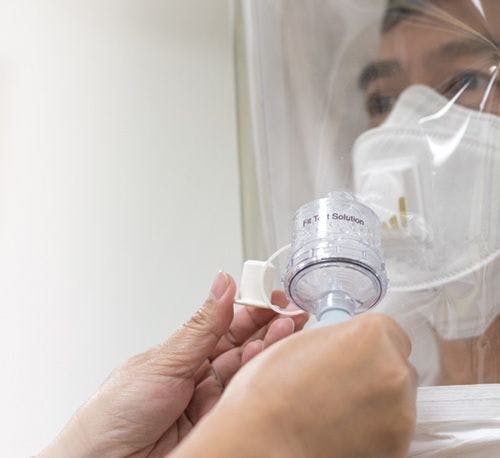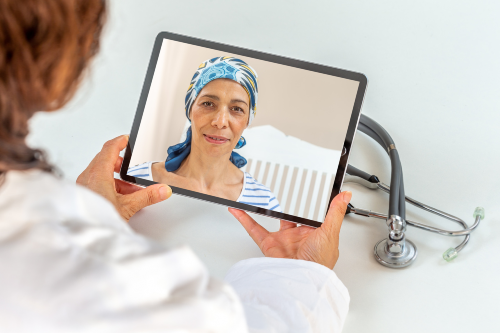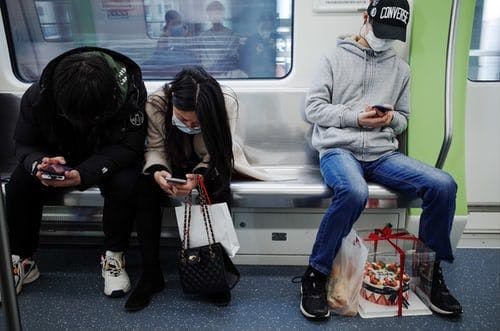Telehealth in the Time of COVID-19: A 20-Year Overnight Success
The Infectious Diseases Society of America updated its position statement to educate its membership on the use of telemedicine and telehealth technologies to provide “evidence-based, cost-effective, subspecialty care.”
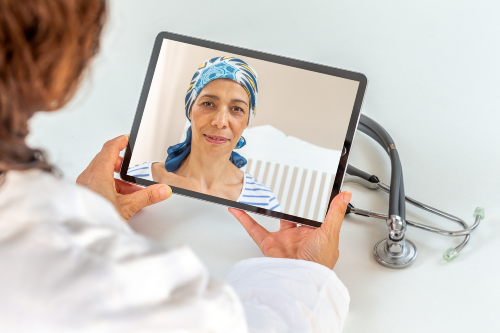
NOTE: FROM THE JUNE PRINT ISSUE OF INFECTION CONTROL TODAY®.
Pam Koman-Podolak is immunocompromised, with multiple health conditions, including rheumatoid arthritis. She falls squarely into the category of people most at risk during the COVID-19 pandemic. When the state of New Jersey, where she lives, issued stay-at-home orders, she says, “I was so sad, thinking I had to cancel appointments. And I was scared to go in because my rheumatologist works in a big medical center and I’m on immunosuppressant meds. But I really needed to talk to him and see him.”
Koman-Podolak is lucky: Her rheumatologist is “really into technology,” so she was able to talk with him via computer. Although this was her first experience with telemedicine, it turned out to be a good one. “It was immediately obvious that he was comfortable using this technology,” Koman-Podolak says. “It felt very personal and professional. I was impressed that he noticed my knuckles were swollen by examining my hands through the app!” Her rheumatologist (she calls him a “rheumy rockstar!”) “saved the day for me by offering this wonderful solution.”
But despite 20 years of real-life experience and growing popularity, telehealth and telemedicine (which is usually defined as clinical interactions) still aren’t as widely used as might be expected. According to 2019 data fromDefinitive Healthcare, an analytics firm, only one-third of inpatient hospitals and 45% of outpatient facilities provide telehealth solutions or services. Iowa, Utah, and South Dakota-which have large rural swaths-have the highest implementations, with 64% or more of the state’s hospitals reporting a service.1 Northeastern states reported the lowest level.
That’s changing, as the coronavirus disease 2019 (COVID-19) pandemic has wrought changes in everything from routine care to triage. Between erratic supplies of personal protective equipment for practitioners and patients who don’t want to risk their health, telemedicine is proving a boon.
Last year, the Infectious Diseases Society of America (IDSA) updated its position statement to educate its membership on the use of telemedicine and telehealth technologies to provide “evidence-based, cost-effective, subspecialty care” (the list of established-use cases for infectious diseases includes infection prevention and control).2 Most acute care facilities have infection prevention (IP) specialists, but many community hospitals and long-term care facilities, now overwhelmed by the flood of pandemic-related cases, may not have had the time, money, or expertise to develop and manage IP programs. In those cases, IDSA encourages use of telehealth tools as a potential solution: Where an IP specialist isn’t available, the authors say, telehealth platforms can be used to connect infectious disease physicians and other experts with local providers.
The American Hospital Association (AHA) also thinks telehealth is particularly crucial now. On March 5, Richard Pollack, AHA’s president and CEO, wrote a letter to US Department of Health and Human Services Secretary Alex Azar headed “action needed to support hospitals’ ability to respond to COVID-19.”3 Ensuring safe care for patients, protecting healthcare professionals providing patient care, and supporting the health and safety of communities “are the main priorities for hospitals and health systems preparing for and responding to COVID-19,” the letter said.
To that end, “We urge the administration to take the following regulatory actions to support these efforts…” Among them, to enable broader use of telehealth. “Hospitals want to enable individuals who are experiencing symptoms and may suspect they have COVID-19 to consult with a care provider without going to the hospital.…” That was followed on March 19 by a joint letter to Congress from the AHA, American Medical Association, and American Nurses Association, again detailing urgent needs to combat coronavirus, including training on telemedicine and telehealth capacities.4
The Veterans Administration (VA), an early adopter of telehealth, is among those leading the way. It began offering telehealth services in 2003, and has experience based on nearly 3 million healthcare interactions with (as of 2019) more than 900,000 veterans. The VA has been beefing up its telehealth system and is getting more money to help fight COVID-19. Roughly $16 billion of the emergency funding passed last month in the Coronavirus Aid, Relief, and Economic Security (CARES) Act is going to the VA to expand its telehealth services.5 CARES also includes some expanded authorities for VA officials to respond to the coronavirus crisis, such as new agreements with broadband internet suppliers to increase telemedicine options for veterans.
The Definitive Healthcare data reveal some possible reasons why providers have been slow to implement telehealth: Fear of fraud is one. In February, 2 telemedicine companies were charged with conducting a complex $56 million scheme to convince Medicare beneficiaries that they needed such items as back or knee braces regardless of medical necessity.6
Another is federal policy. The US Centers for Medicare and Medicaid Services (CMS), according to Definitive Healthcare, only finalized expansion of provider reimbursement for telehealth and virtual care services in late 2018.1 CMS also issued a new ruling that, as of this year, Medicare Advantage members will have more access to virtual care visits. DH speculates that providers might have been waiting for the new ruling to go into effect before investing in new technologies. Cost, of course, is always a barrier. Virtual technologies may only apply to a small percentage of patients, making it an investment that some providers may feel outweighs the benefits.
And, as AHA’s Pollack noted in his letter, hospitals have concerns that these technologies may not be compliant with Health Insurance Portability and Accountability Act (HIPAA) privacy and security requirements. Still, the AHA urged HHS to waive HIPAA privacy requirements and to loosen reimbursement rules to allow coverage of services for telehealth. In early April, the HHS eased HIPAA enforcement “during this public health emergency.”7Among other things, the updated rule allows healthcare providers to use FaceTime, Zoom, Skype, and other approved applications for the provision of care.
Finally, there’s a prevailing concern, Definitive Healthcare concludes, about whether providers can gather the “personal insight that comes with consistent treatment by the same caregiver over time.”
That’s a worry that Koman-Podolak also had. “My doctor had me hold my hand up to the camera, make a fist, and rotate my fist so he could examine my joints. But I usually get a full physical exam of my shoulders, elbows, wrists, knees, ankles, hips, and back. It’s simply too much to accomplish in a telehealth visit.” And Michael Petrucelli, a New Jersey retiree who had his first telehealth visit with his regular doctor recently, says it was quick and to-the-point, which he enjoyed. But, he says, “I think it would be difficult for a medical professional to diagnose anything without meeting the patient in person.”
IDSA notes that a patient’s comfort level with their healthcare provider affects their health outcomes and quality of life. “The practice of medicine has a tradition of establishing a trusting, therapeutic relationship with patients,” the IDSA statement says. “There can be a perception amongst inexperienced providers and patients that technology lacks intimacy.”
There are ways around the lack of in-person interaction. Brook Calton, MD, MHS; Nauzley Abedini, MD, MSc; and Michael Fratkin, MD, of University of California, San Francisco, and ResolutionCare Network, offer some practical pointers on making the virtual visit more “lifelike.”8 Based on their experiences, they advise clinicians to, among other things:
· Create “a therapeutic telemedicine environment,” with a quiet, private, well-lit space. When possible, choose a space with a professional, neutral, and uncluttered background.
· Use a laptop or desktop computer if possible, to avoid the distracting-or even nauseating-sensations of a moving handheld smartphone.
· Look at the camera to ensure good eye contact and foster rapport and trust.
· Reassure the patient that the conversation is private by showing them the room, and asking the patient to do the same.
· Pay close attention to subtle comments made by patients and caregivers and their body language.
The authors also suggest looking for “unique opportunities” to learn more about the patient via telemedicine. For instance, meet their pet virtually, or have them share family photographs. And, particularly relevant in the current pandemic, “A simple question early in the telemedicine visit like, ‘I know we are facing really scary, uncertain times right now. How are your spirits?’ can be effective.” Moreover, they add, clinicians can brainstorm what parts of the physical exam can be performed by video: “[I]t’s surprising to most clinicians how much is possible.”
Patients could help drive the uptake of telehealth services. Published data and anecdotal evidence suggest patients like telemedicine, although as recently as last year a survey found only 10% of patients nationwide had tried it. 9 When they do, they give it high marks for saving them time, travel, and close contact with the germs rife in public and healthcare areas. Koman-Podolak’s rheumatologist visits mean a 3-hour round trip, for instance. She also says in-person visits are too dangerous right now; she feels “100% safer with a telehealth option.”
Dan W., a veteran in rural Idaho who did not want to give his last name, has been using video appointments with his psychiatrist-who lives in Minnesota-for several years now. In fact, the VA telehealth program was started mainly as outreach to meet the needs of rural veterans, who make up more than half of the VA patient population. Dan considers the system a “tremendous service. I couldn’t be happier.” He’s not alone: In a 2016 survey, VA telehealth scored high in veteran satisfaction: 92% for clinical video telehealth and 88% for home telehealth.10
Practitioners, too-even those who might have been anti-telehealth or on the fence-are acknowledging the benefits, particularly now. Haider Warraich, a Boston cardiologist, for instance, was a skeptic at first. But now he hopes that one thing that comes out of the pandemic will be an increased reliance on telemedicine, “something that should have happened long ago.” In an opinion piece in the Los Angeles Times, Warraich says, “Physical exams are the bedrock of how doctors and nurses assess patients…Physical contact, I’d always thought, was at the heart of how doctors and patients communicate.”11
His mind has been changed, though, not only by experiences with telemedicine, but by practicality. “Hospitals have been notorious petri dishes for deadly bugs since long before COVID-19,” he notes, “and this pandemic has brought that risk into crystal-clear focus.”
Once tried, telehealth may change usual habits for the better. “When this pandemic has passed, I will probably keep a mix of in-person and telehealth visits,” Koman-Podolak says. “I plan to use it for endocrinology, primary care, and emergency medical (that is, virus or flu), if needed. I don’t think I would rule anything out.”
Anything that helps keep patients safer and gives practitioners a chance to stay in touch without actually being in touch is a good thing. Could be that telehealth is a silver lining to the dark cloud of the COVID-19 crisis.
Janet Dyer is a writer and editor specializing in clinical topics. She lives in Suffern, New York.
References:
1. Telehealth adoption in the US: 2019 trends. Definitive Healthcare. 04-29-20. https://blog.definitivehc.com/us-telehealth-adoption-2019. Accessed April 23, 2020.
2. Infectious Diseases Society of America Position Statement on Telehealth and Telemedicine as Applied to the Practice of Infectious Diseases. Clinical Infectious Diseases. May 1, 2019. 68(9):1437-1443. https://academic.oup.com/cid/article/68/9/1437/5372646. Accessed April 24, 2020.
3. American Hospital Association. AHA urges HHS to take regulatory actions to help hospitals respond to COVID-19. Letter. 03-05-20. https://www.aha.org/lettercomment/2020-03-05-aha-urges-hhs-take-regulatory-actions-help-hospitals-respond-covid-19. Accessed April 24, 2020.
4. American Hospital Association. AHA, AMA and ANA send letter to Congress on COVID-19 funding. Letter. 03-19-20. https://www.aha.org/lettercomment/2020-03-19-aha-ama-and-ana-send-letter-congress-covid-19-funding. Accessed April 24, 2020.
5. CARES Act expands telehealth coverage for Medicare, FQHCs and the VA. mHealth Intelligence. 03-30-20. https://mhealthintelligence.com/news/cares-act-expands-telehealth-coverage-for-medicare-fqhcs-and-the-va. Accessed April 24, 2020.
6. Owners of telemedicine companies charged in $56M Medicare fraud scheme. Becker’s Hospital Review. 02-06-20. https://www.beckershospitalreview.com/legal-regulatory-issues/owners-of-telemedicine-companies-charged-in-56m-medicare-fraud-scheme.html. Accessed April 24, 2020.
7. US Department of Health and Human Services. HIPAA, civil rights, and COVID-19. https://www.hhs.gov/hipaa/for-professionals/special-topics/hipaa-covid19/index.html. Accessed April 24, 2020.
8. Calton B, Abedini N, Fratkin M, Telemedicine in the time of coronavirus. J Pain and Symptom Manage (2020). Article in press. https://www.jpsmjournal.com/article/S0885-3924(20)30170-6/fulltext. Accessed April 24, 2020. [note: don’t know how to style this, no vol or page info. It was published online]
9. Telehealth: best consumer healthcare experience you’ve never tried, says J.D. Power study. JDPower. 10-28-19. https://www.jdpower.com/business/press-releases/2019-us-telehealth-satisfaction-study. Accessed April 24, 2020.
10. US Department of Veterans Affairs. VA telehealth services. https://www.newengland.va.gov/nhvision/VATelehealthServicesFactsheet.pdf. Accessed April 24, 2020.
Warraich HJ. Op-Ed: As a doctor, I use telemedicine. With the coronavirus threat, it could revolutionize healthcare. Los Angeles Times. 03-17-20. https://www.latimes.com/opinion/story/2020-03-17/op-ed-as-a-doctor-i-use-telemedicine-with-the-coronavirus-threat-it-could-revolutionize-healthcare. Accessed April 24, 2020.
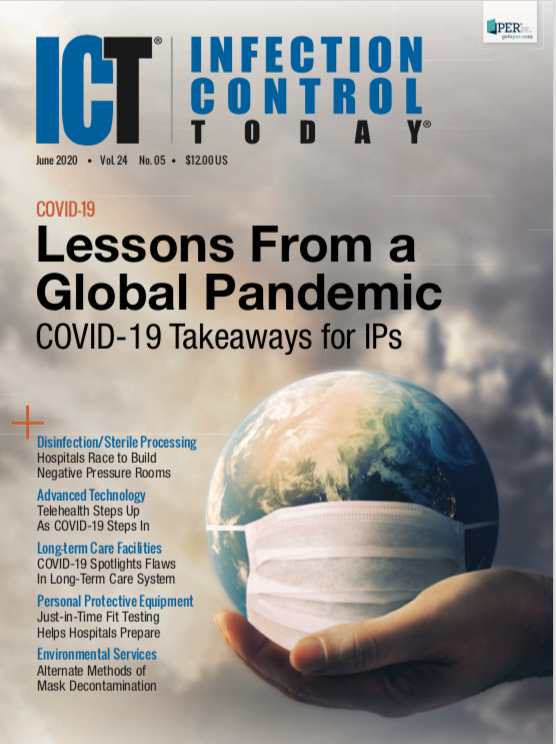
Newsletter
Stay prepared and protected with Infection Control Today's newsletter, delivering essential updates, best practices, and expert insights for infection preventionists.


